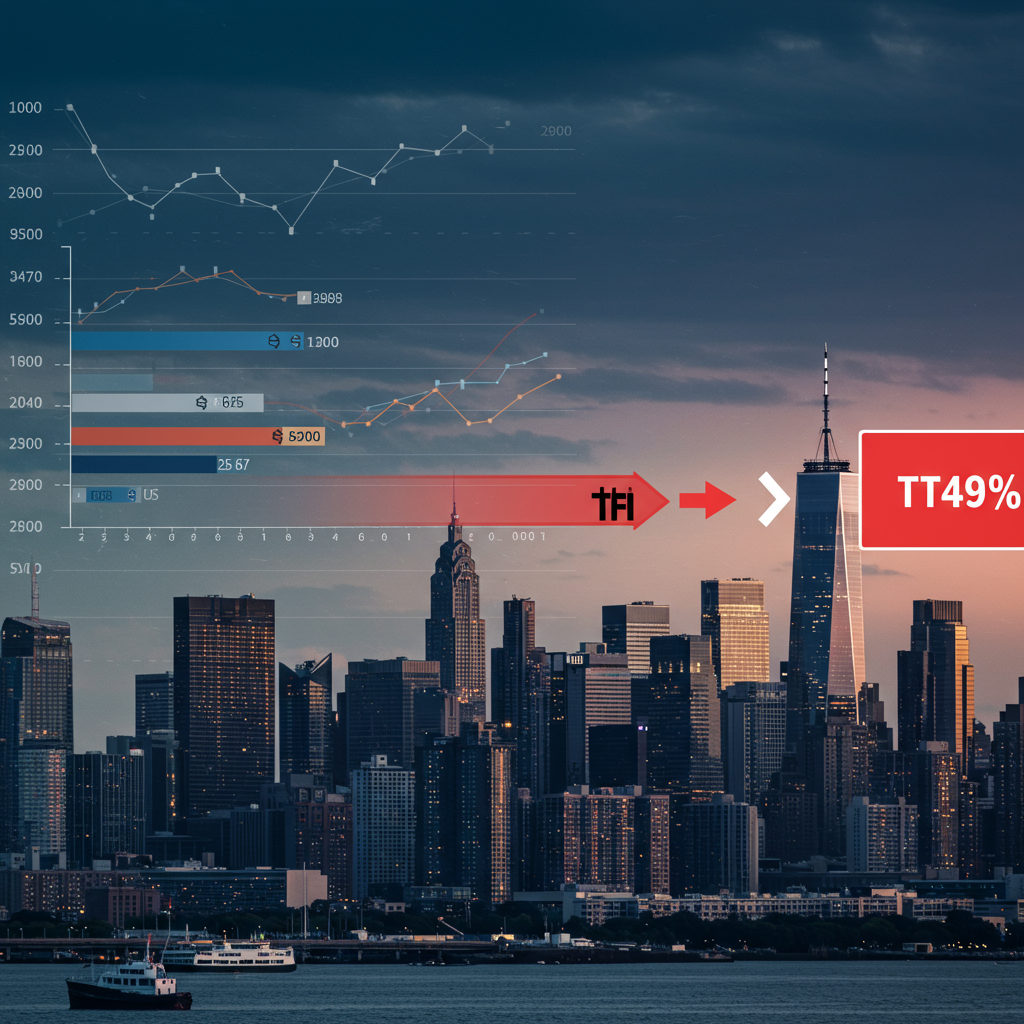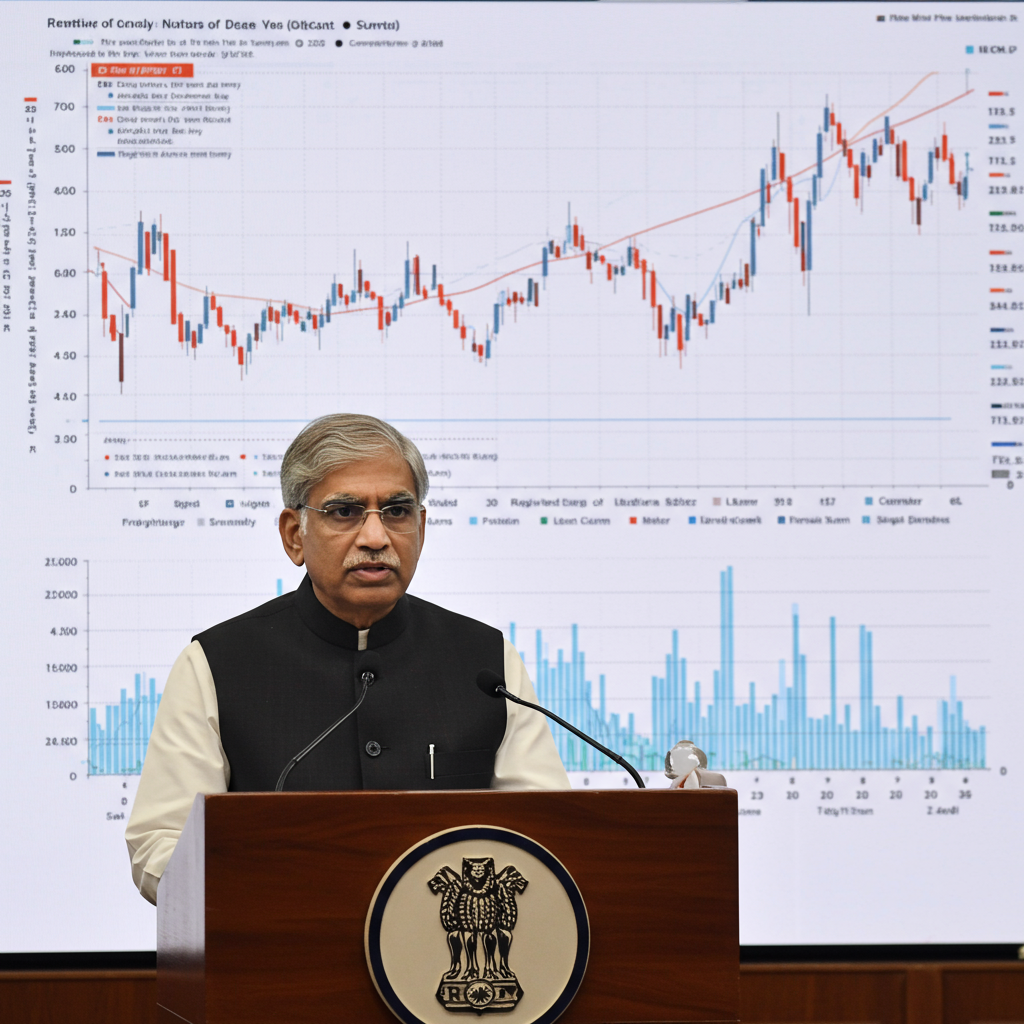Concerns about the impact of significant US tariffs are resurfacing. Initially, it seemed the predicted economic damage, particularly to US inflation and overall growth, hadn’t materialized as severely as feared. The economy appeared resilient, and price increases remained surprisingly subdued. However, this apparent calm might be temporary, according to analysts at ING and reinforced by recent global economic data. The consensus is building that the full economic consequences of trade protectionism are not absent, but merely delayed.
The initial round of tariff threats and implementations under the previous administration caused significant market anxiety. Investors had become somewhat accustomed to the back-and-forth rhetoric and last-minute negotiating tactics. While markets weren’t entirely immune to the uncertainty, there was a prevailing expectation that anticipated deadlines for new tariffs might pass without immediate major disruptions. This perspective was partly fueled by seemingly positive US economic indicators at the time. The S&P 500 stock index reached record highs, perceived as a key barometer within the White House. Abstracting from trade-related noise in GDP figures, the US economy largely held up. Crucially, inflation hadn’t shown a significant acceleration, and the government was collecting substantial tariff revenues. This environment encouraged major trading partners, like the European Union, to be cautious and refrain from full-scale retaliation as long as negotiations continued.
The Crucial ‘Lag’ Effect Explained
This leads to a critical question: Was the economic impact of tariffs genuinely less severe than anticipated, or is there simply a considerable time lag at play before the effects become fully apparent? When focusing specifically on inflation, ING analysts firmly believe the latter is true. The Federal Reserve’s preferred measure of inflation, the core Personal Consumption Expenditures (PCE) deflator, remained unexpectedly mild for several months. However, ING predicted this trend would change as more recent data became available, with the effects becoming even clearer over subsequent months.
Based on observations from earlier periods of tariff implementation, it typically took around three months for the full impact to register in consumer prices. This time around, American companies had forewarning of potential tariffs. This allowed them to proactively import goods and fill warehouse space with inventory before the new duties took effect. This significant inventory buffer provided companies, especially those with less pricing power, a crucial window to “wait and see” before increasing their prices to reflect the higher import costs. However, this strategic stocking-up strategy is not sustainable indefinitely. As these pre-tariff inventories are depleted, businesses will be forced to replenish stock at the higher tariff-affected prices, inevitably leading to price increases passed on to consumers and other businesses.
Global Evidence: Tariffs Hitting Hard Elsewhere
While the US economy showed initial resilience, concrete evidence from major trading partners suggests tariffs have indeed begun to bite, highlighting the global nature of trade disruption. For instance, May export data from China revealed a significant slowdown in overall growth. More tellingly, exports specifically to the United States plummeted by a sharp 34.5% year-on-year. This marked the most severe decline since the initial COVID-19 outbreak drastically disrupted global trade flows. Simultaneously, imports from the US into China also fell significantly, decreasing by 18.1%. This stark drop in bilateral trade volume provides clear empirical evidence of the direct disruptive effect of tariffs on trade flows between the two economic giants.
The pressure isn’t just external for China; domestic demand also showed signs of weakness, contributing to deflationary pressures. The Producer Price Index (PPI), a key measure of factory-gate prices, contracted by 3.3% in May, a deeper decline than the previous month and the worst level in 22 months. While core consumer prices saw a slight uptick, the improvement was described as fragile. Sluggish retail sales growth, weak housing prices, and slowing car sales growth all pointed to underlying fragility in China’s internal economy, which typically relies heavily on exports for growth. The trade tensions and resulting drop in US demand undoubtedly compounded these domestic issues, prompting Beijing to implement monetary stimulus measures to counteract the headwinds.
Looking at other regions, hypothetical scenarios based on the mechanisms of a global tariff war also illustrate potential impacts. Analysis focusing on the first quarter of 2025 under a hypothetical future scenario shows how tariffs could contribute to economic contraction. In this scenario, the US economy itself reportedly contracted, raising recession risks, despite political claims that tariffs were unrelated. Analysis suggested that a jump in imports, potentially influenced by tariff anticipation or restructuring of supply chains, actually weighed down GDP figures.
Across the Atlantic, major European economies also felt the strain in hypothetical scenarios. France, while narrowly avoiding a technical recession in Q1 2025, saw only modest growth largely driven by temporary factors like an increase in inventories – a similar mechanism to the US inventory buffer described by ING. Final domestic demand stalled, investment shrank, and foreign trade was a significant drag as exports fell sharply while imports rose. Analysts predicted sluggish growth for France, directly linking it to tariffs, trade uncertainty, and the global slowdown. One estimate suggested a permanent 10% US import duty could shave 0.1% directly off French GDP. Other nations vulnerable to trade exposure also showed weakness; Hungary’s economy reportedly contracted even before a full global tariff war hypothetically took hold. Specific industries also faced direct impacts, with examples like a diamond producer delaying sales due to tariff uncertainty.
Implications for the US Economy and the Fed
Bringing the focus back to the United States, the evidence of delayed impacts and global disruption has significant implications. While the most recent labor market data might not show an immediate collapse – employment is often a lagging indicator of economic health – overall sentiment remains fragile. ING noted that tariffs have already “taken the wind out of the sails” of the US economy. This suggests that, despite initial appearances, trade tensions point towards more muted growth rates moving forward. This is particularly concerning given existing pressures on public finances.
The potential for a summer of rising inflation, driven by the eventual pass-through of tariff costs as inventory buffers disappear, is a primary reason why some analysts, like ING, were not expecting an immediate interest rate cut from the Federal Reserve. Despite financial markets potentially pricing in an earlier move, the anticipation of higher prices linked to trade policy suggested the Fed would hold off. Instead, a later restart on monetary easing, perhaps in November or December, seemed more probable based on this view.
In conclusion, while the initial “bite” of US tariffs may have seemed less painful than some predicted, the evidence suggests a significant delay rather than outright avoidance of impact. Strategic inventory building provided a temporary shield, but as this buffer erodes, higher costs are likely to filter through, potentially fueling inflation. Global data already shows tariffs causing concrete disruption to trade flows and contributing to economic slowdowns in key partner nations. This global headwind, combined with fragile domestic sentiment and potential inflation pressures from tariff pass-through, indicates that the full economic cost of trade protectionism is still unfolding.
Frequently Asked Questions
How do tariffs affect inflation, and why might the impact be delayed?
Tariffs are taxes on imported goods. Companies importing these goods face higher costs. Initially, they might absorb these costs or use existing inventory bought at lower prices, delaying price increases for consumers. However, once old stock runs out, companies must buy and sell at the higher tariff-affected prices, leading to price increases. Analysts like ING noted that companies significantly built up inventory ahead of recent tariff hikes, creating a temporary buffer that delayed the inflationary effect by several months.
What concrete evidence exists that tariffs are hurting other economies?
Recent trade data from China shows a significant impact, with exports to the US falling sharply by 34.5% year-on-year and imports from the US dropping by 18.1%. This demonstrates a direct disruption to bilateral trade volumes caused by tariffs. Additionally, economic analysis in hypothetical scenarios focusing on the impacts of a trade war suggests slowdowns or contractions in economies heavily exposed to trade, such as France and Hungary, partly linked to tariff uncertainty and reduced trade flows. Specific companies have also reported negative impacts, like delayed sales or limiting imports due to tariff concerns.
What are the potential implications of this delayed tariff impact for the US economy and the Federal Reserve?
The delayed impact suggests that the US economy could face headwinds from trade policy in the future, including potentially more muted growth rates as global trade slows down and supply chains adjust. Crucially, the eventual pass-through of tariff costs from depleted inventories could contribute to rising inflation. This potential inflationary pressure makes it less likely that the Federal Reserve would cut interest rates immediately, as controlling inflation is a key mandate. Analysts like ING anticipated that the Fed might delay rate cuts, potentially until late in the year, partly due to the expected tariff-driven rise in prices.




